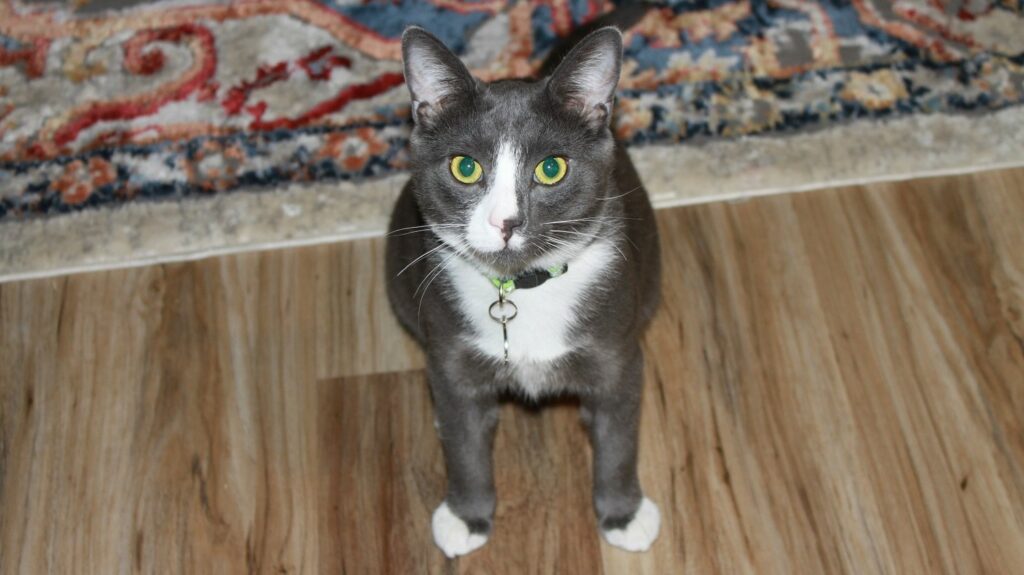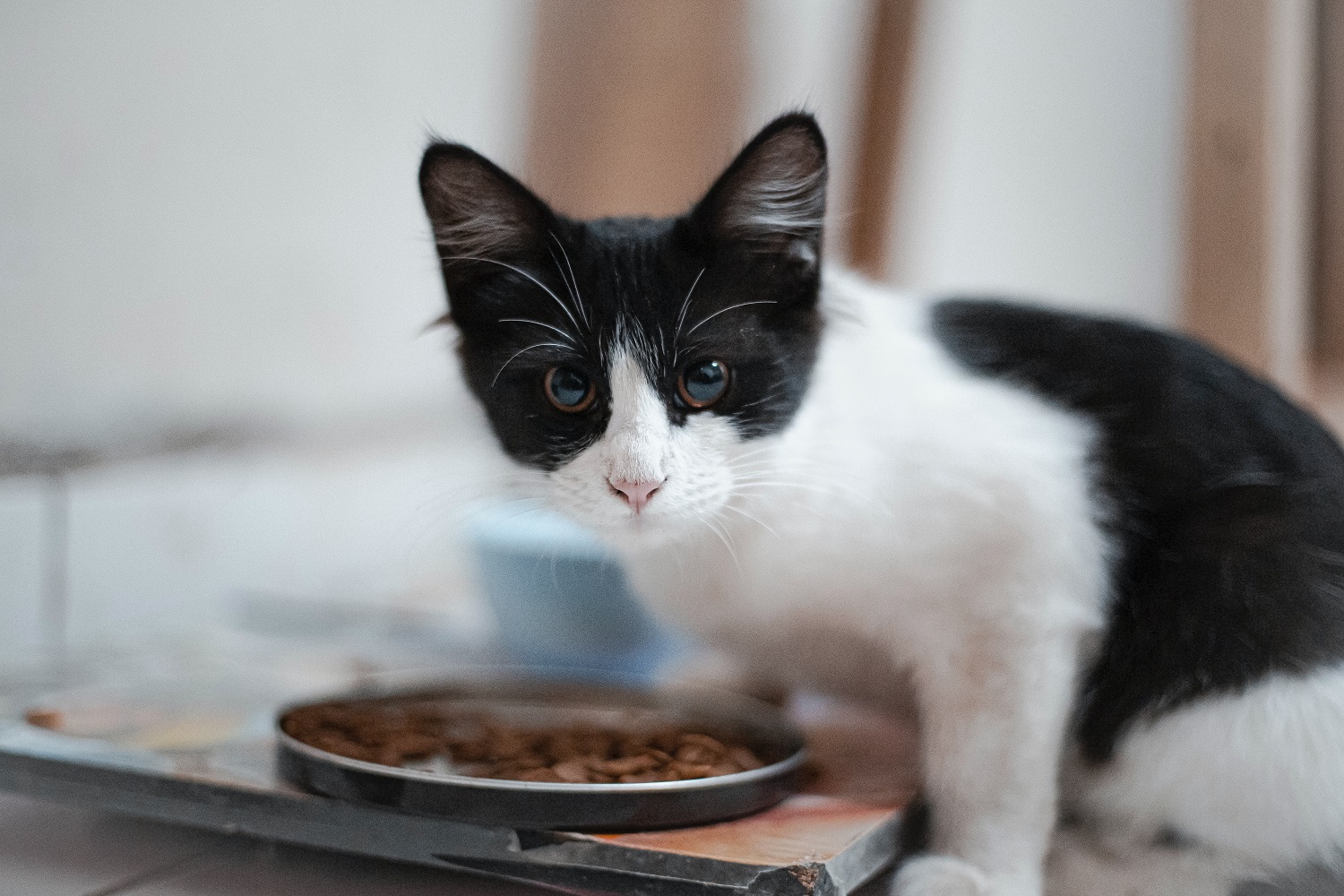At 6 months old, your kitten is right in the middle of their teenage phase. They’re growing fast, full of energy, and constantly hungry. One minute they’re napping like a baby, the next they’re doing zoomies across the couch. Figuring out how much to feed them during this stage can feel like a guessing game, but don’t worry. We’ve got you covered.
Let’s break it all down: how much to feed, how often, and what to keep in mind as your kitten grows toward adulthood.
What’s Going On at 6 Months?
By 6 months, most kittens have lost their baby teeth and are well on their way to physical maturity. While they might look close to full-grown, they still need a kitten-specific diet to support their rapidly developing bones, muscles, and immune system.
At this stage, your kitten:
- Still needs more calories per pound than an adult cat
- Is becoming more active, playful, and social
- May be ready to transition from four meals a day to two or three
You’re entering a transitional phase between kittenhood and adulthood, so feeding needs can shift quickly.
How Much Food Does a 6-Month-Old Kitten Need?
There’s no one-size-fits-all answer, but here are some general guidelines:
Dry Food
If you’re feeding high-quality dry kitten food:
- Aim for 60 to 75 calories per pound of body weight per day
- For a 6-month-old kitten weighing around 6–8 pounds, that’s 360 to 600 calories per day
Dry food typically provides about 300–400 calories per cup, so you may be feeding between ¾ to 1½ cups per day, depending on brand and calorie content.
Wet Food
Wet food is often measured in cans or pouches:
- A 3-ounce can usually contains about 70–100 calories
- Many kittens eat 2 to 3 cans per day along with or instead of dry food
Wet food is especially helpful for keeping your kitten hydrated, since cats are naturally low water drinkers.
Feeding Schedule at 6 Months
Most kittens at this age can comfortably eat two or three meals a day. Some pet parents stick with three to help with energy regulation, while others prefer two meals if their kitten is starting to self-regulate.
Example schedule:
- Morning: ½ daily portion
- Evening: ½ daily portion
or - Morning, midday, evening: split the portion into thirds
Some cats benefit from free feeding, especially if they graze instead of gobbling everything at once. Just monitor their weight and be mindful of overeating.
Watch for These Signs You’re Feeding the Right Amount
Every kitten is a little different, so it helps to watch for clues:
- Healthy weight: You should be able to feel but not see their ribs
- Playful and active: A well-fed kitten has the energy to play but isn’t constantly begging
- Consistent litter box habits: Sudden changes in stool can signal overfeeding or poor food quality
If your kitten is gaining too much weight too fast, you might need to dial things back. If they seem hungry all the time, check the calorie content of the food and consider adding more meals or switching to a higher-calorie formula.

Mommy says that I’m chubby. And she calls me Piglet. Why do you put the food out if I’m not supposed to eat it? I mean, seriously. #WinstonThePiglet #ChubbyKitty #Foodie #NomNom #TreatsAreForKitties
Winston
Choosing the Right Food
Stick with food labeled “complete and balanced for growth” or “for kittens.” It should include:
- High protein content
- Moderate fat
- Added DHA for brain development
- No fillers or unnecessary additives
Talk to your vet before switching to adult cat food. Most kittens aren’t ready for that until 9 to 12 months, depending on their breed and size.
Hydration Still Matters
Make sure your kitten has access to fresh water at all times. Even if they’re eating mostly wet food, hydration supports healthy digestion, urinary health, and energy levels.
If your kitten isn’t drinking much water, try:
- A pet water fountain
- Wide, shallow bowls
- Adding a bit of water to their dry food
Final Thoughts: Feed for Growth, Not Just Fullness
Feeding a 6-month-old kitten is about more than filling their belly. It’s about fueling their growth, development, and energy. Stick with a quality kitten food, keep an eye on their body condition, and adjust as needed. If you’re ever unsure, your vet can help you fine-tune a feeding plan that’s just right.
And don’t forget: in a few short months, you’ll be feeding an adult cat. For now, enjoy the kitten chaos, and keep the food coming.
Sources:
– Feeding Growing Kittens https://www.petmd.com/cat/nutrition/feeding-growing-kittens
– Nutritional Needs of Kittens https://vcahospitals.com/know-your-pet/feeding-growing-kittens
– Kitten Feeding Guidelines https://www.aspca.org/pet-care/cat-care/cat-nutrition-tips
– Understanding Cat Calories and Weight https://icatcare.org/advice/feeding-your-cat/
– Kitten Growth and Development https://www.humanesociety.org/resources/kitten-development-timeline
Recent Posts
Your Cat Might Be a Furry Little Healer… or at Least a Fuzzy Alarm System If you’ve ever had your cat suddenly become extra clingy when you’re under the weather, you’re not alone. From...
Cats are experts at hiding things, socks under furniture, their disdain for your playlist, and, unfortunately, symptoms of illness. In the wild, showing weakness could make them a target, so even...


